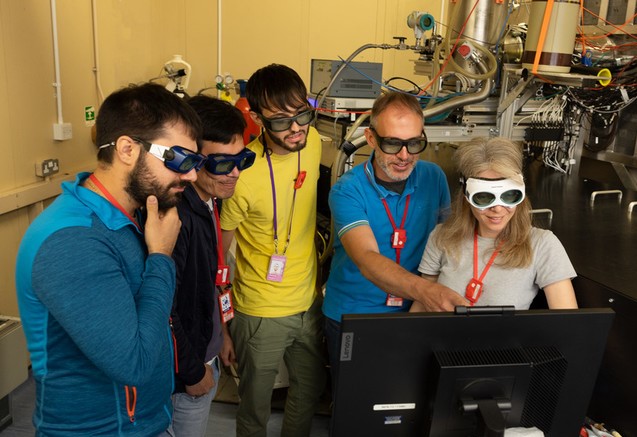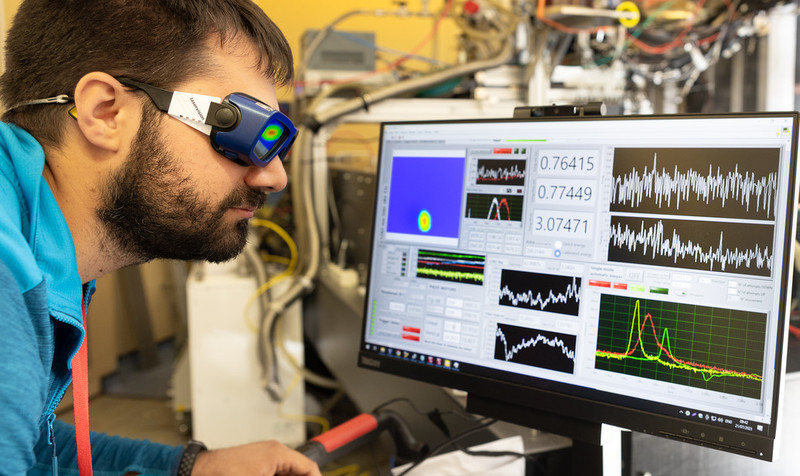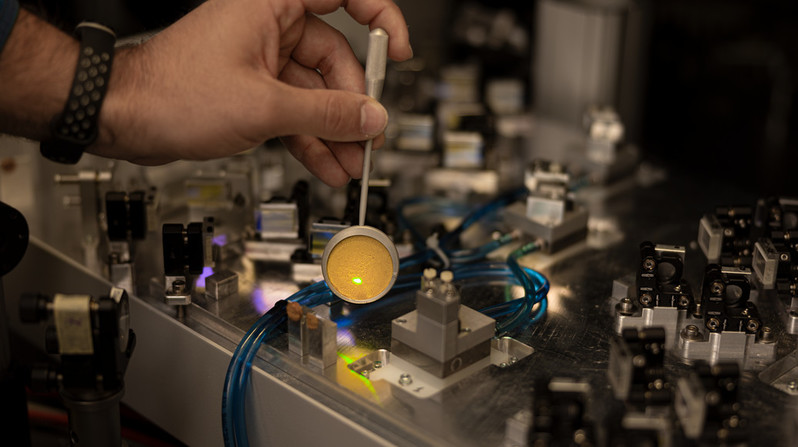
The proton was discovered over 100 years ago in 1919 by Professor Ernest Rutherford but recently we have started to realise that our measurements of its size could be inaccurate. The charge radius of a proton is the space that a protons charge is distributed within, making it the area that a protons charge can affect other particles. Based on this understanding, we have been utilizing the effect that this area has on electrons to calculate the proton charge radius since the 1950s.
In 2010 this technique was reinvestigated. They wanted to test replacing the electrons with their 200 times heavier twin counterparts, muons. The theory was that, due to their size, muons are far more likely to be found very near to the proton and eventually even within it, which would make the experiment more accurate. The data collected, however, unveiled a problem for particle physicists, now coined “the proton radius puzzle". The radius measured using muons was 4% smaller than the previous measurements, revealing inconsistencies that could not be explained. Whilst 4% may not seem substantial to many, it is a large inconsistency for subatomic particles, as they are our primary building blocks for the entire visible universe and underpin our understanding of atomic structure and behaviours. If these experiments reveal that the size of a proton changes depending on how we measure them, or that it is different to what we originally thought, it could be a huge discovery for particle physics.

With 15 different institutions from across the world involved, the FAMU experiment is a massive project led by the Italian National Institute for Nuclear Physics, INFN. The experiment itself involved - a specialist x-ray detector made by groups from Milan, Pavia and Bologna, a high-reflectivity optical cavity made in Caserta, and a unique, custom-made infrared laser, developed by the team in Trieste. Each piece is vital to a stage in the experiment which begins with a simple hydrogen atom.
 Due to its simplicity, hydrogen (consisting of only 1 proton and 1 electron) is a great starting point for understanding protons. The scientists then used our muon beamline to alter the classic hydrogen into muonic hydrogen – where they remove the electron and swap it out for a muon. The muonic hydrogen is kept at 77K ( -200 degrees Celsius), so the experiment can take place at the lowest possible energy state. Once at this ground state, the specialist laser comes into play. The laser is fired at the particle and bounces off the reflectors surrounding it, maintaining the focus of energy on the particle. The researchers can slowly change the wavelength of the laser, which will cause the muon to become excited. At the point of excitement, the muon will emit x-rays, which are detected by their own detectors waiting in the wings for this precise moment, so the researchers can tell when an excitation has occurred. The wavelength of the laser at the point of excitation is the key. That is the value they can use to calculate the size of a protons charge radius as the more energy required the larger the radius.
Due to its simplicity, hydrogen (consisting of only 1 proton and 1 electron) is a great starting point for understanding protons. The scientists then used our muon beamline to alter the classic hydrogen into muonic hydrogen – where they remove the electron and swap it out for a muon. The muonic hydrogen is kept at 77K ( -200 degrees Celsius), so the experiment can take place at the lowest possible energy state. Once at this ground state, the specialist laser comes into play. The laser is fired at the particle and bounces off the reflectors surrounding it, maintaining the focus of energy on the particle. The researchers can slowly change the wavelength of the laser, which will cause the muon to become excited. At the point of excitement, the muon will emit x-rays, which are detected by their own detectors waiting in the wings for this precise moment, so the researchers can tell when an excitation has occurred. The wavelength of the laser at the point of excitation is the key. That is the value they can use to calculate the size of a protons charge radius as the more energy required the larger the radius.

This group are still in their first round of testing, ensuring all their equipment is fully functional. They will be returning to the ISIS Neutron and Muon Source in the autumn to collect further data. From the collation of all the data from many cycles, they will be able to determine whether they have disproved the standard model theory.
Further information:
For more explanations on the experiment itself, see these papers:
The FAMU experiment: Muonic hydrogen high precision spectroscopy studies.
Investigating the Proton Structure: The FAMU Experiment
For more information on the proton radius puzzle see this article: https://www.nature.com/articles/d41586-019-03364-z
